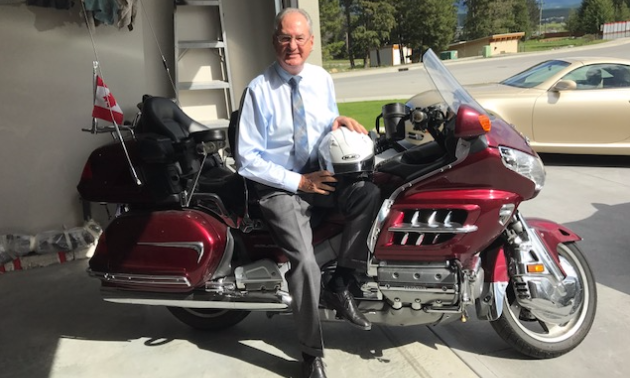So, you want to ride a motorbike, eh? First off, good for you! Secondly, you’re going to need guidance if you expect to be a competent rider and nail the motorcycle skills test and Class 6 road test. Help is on the way, thanks to Wally Eddy, an ICBC-certified motorcycle instructor in Cranbrook. With more than a decade of experience as a certified instructor, Eddy has tutored over 200 students who went on to pass their skills and road tests. Heed his advice and you’ll be cruising down the highway on two wheels in no time.
Embrace being a newbie
One of the first challenges rookie riders encounter is overestimating their abilities. “New riders are like private pilots—they think they know how to fly the plane but they don’t,” Eddy said. “Don’t think you know it from reading a 25-page book of regulations and rules.”
Common mistakes
Rolling down an unoccupied highway is as easy as it looks. The tricky part is when you’re barely moving. “Any idiot can ride down the highway and shift gears,” said Eddy. “The challenge is slowing down behind vehicles, making tight turns and riding slow without feet touching down to maintain balance.”
New motorcyclists are usually inept at using their friction point and rear brakes properly. A lack of confidence while trying to make tight turns is another early hurdle novice riders will need to overcome. “During training, we focus on weight and balance, friction point, rear brake and riding slowly at a walking pace,” said Eddy. “After four hours of doing this, there is a better understanding of how to control the bike while having to ride slow.”
Avoiding blunders
The adage “practice makes perfect” is appropriate when learning to ride a motorcycle. Set up cones and weave around them slowly, practising tight turns. Get a hang of using the rear brake and friction point.
Once you’ve built up a comfort level in ideal conditions, head outside when it’s raining and the roads are wet. You don’t know what weather you’ll be riding through for your road test—or any time thereafter—so practise during ugly conditions too.
How to stay safe
Unless you only plan on riding in an isolated, postcard-like setting, you’re going to need to learn how to share the road with other motorists. “Over 80 per cent of all accidents that involve a motorcycle are because the other driver did not see the rider,” said Eddy. Be visible. Wear bright gear.
Being aware of your surroundings will eliminate many predicaments. Do frequent shoulder and mirror checks. Understand positioning—dominant versus non-dominant—and staggered riding when travelling with other bikers.
When it comes to having the appropriate mindset, Eddy said “Ride as if your life depended on it.”
Preparing for skills and road test
The road test is designed to ensure the new rider is safe, responsible, and has control of their motorcycle in all intersections, subdivisions and the highway.
“The road test is like a Sunday drive,” Eddy said. “I take my students out to ensure they are fully aware of road signs, highway positioning, intersection work, riding in the rain, dominant and non-dominant road positioning and proper use of arm signals.”

Eddy has tutored over 200 students who went on to pass their skills and road tests. — Photo courtesy Wally Eddy
Road test rundown
This road test is a consolidation of confidence, control and skill. It takes approximately one hour to complete.
The proctor will be looking for proper road positioning, signalling in advance of turns, shoulder and mirror checks, keeping both hands on the bars except to make a hand signal and making a right or left turn only when safe to do so.
Once the test is underway, the proctor follows the rider on a set trip around town and out on the highway. The rider has a microphone on the left part of his or her jacket to receive instructions from the proctor.
Licence to thrill
Once you’ve mastered the basics and passed your road test, you’ve earned the right to indulge the call of the open road. Good luck on your road test, and don’t forget to enjoy the journey.








Comments